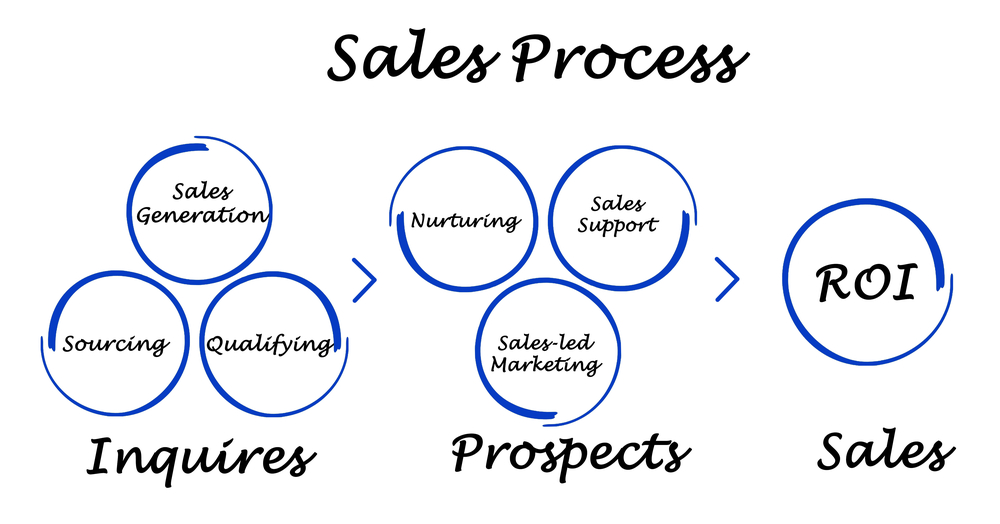Anyone who has built and launched a website has likely encountered an oft-repeated acronym: SEO (search engine optimization). And while you might not have ever done SEO yourself, you've benefited from it in the past: Every day, search engines like Google employ complex algorithms to sift through more than 400 billion web pages and deliver the most relevant results.
Website owners like you use SEO techniques and strategies to get their websites to the top of the search results for relevant user queries. But SEO is not a one-time endeavor — Google and other search engines change often, and ongoing SEO ensures your website stays in front of the people you want to reach. Just as a physical storefront requires regular maintenance and updates to stay competitive, your website needs ongoing SEO to remain visible amidst the ever-changing digital landscape.
The ABCs of SEO: What is Ongoing SEO and Why Does It Matter?
Don't let the techy jargon intimidate you. HubSpot — considered one of the gold standards for SEO and digital marketing advice — defines SEO as simply a collection of strategies and tips that "expand a company’s visibility in organic search results'' and help "drive more visitors to the company’s website, increasing their chances for more conversions which leads to more customers and more revenue."
SEO Connects the Search Engine Algorithms With Your Website's Content
Regardless of your website's goal or industry niche, all SEO techniques have one thing in common: They look at ways to optimize your website's content, keywords, and links to help search engines rank your website higher in the search results when someone searches for something related to your keywords, content, or brand name.
According to HubSpot, SEO needs to address the key factors that all search engines use to determine the value of your website's content — and therefore how high in the search results your website or specific landing page should appear:
- The intent or meaning behind why someone is searching for a specific term or question
- The relevance between what someone searches for, and the content on your website
- The quality of your content (for instance, a website about physical exercise written by certified personal trainers is deemed by Google to be higher quality than a website where the articles are written by non-experts)
- The performance of your website, such as how long it takes a page to load and whether it works well on mobile devices
Static SEO Versus Ongoing SEO: Why It Matters to Stay Fresh and Keep Your SEO Updates Current
As users' web behavior changes and technology evolves, search engines proactively adjust their algorithms.
If you aren't conducting ongoing SEO maintenance and upgrades, a well-optimized website today can quickly become obsolete tomorrow, causing your search rankings to drop and attracting fewer organic visitors. Google itself updates its algorithms several thousand times per year, including significant "major" changes every few months that dramatically change how it crawls and ranks content. For example, Google's infamous Panda update changed how it ranked how-to lifestyle content on the Internet, causing one major content publisher to lose a whopping $6.4 million of traffic and advertising nearly overnight.
How Ongoing SEO Influences Your Website Strategy
Staying abreast of changes to SEO techniques and strategies provides important guidance to your content, marketing, and overarching website strategy. For example, it can dictate or influence:
- How much content you publish, and the content's format, length, and focus
- How you incorporate other forms of media on your website, including images, video, and audio
- How you organize content on your site, including landing page layouts and your site's navigation
- What keywords and target users your website focuses on
Embrace the Power of Ongoing SEO
Caroline Forsey, an expert in thought leadership and marketing content, looked at the survey results from more than 400 of the world's leading web analysts to predict the biggest SEO trends of 2024. According to her data, some of the top changes in SEO strategies this year include:
- A heavier emphasis on expertise, meaning the content on your website should come from experts in your related field (including bylines and author bios that demonstrate the author's credentials and experience on the topic they're writing about)
- A renewed emphasis on first-person, credible content, especially as more websites generate high volumes of low-quality AI content (Google itself has announced upcoming changes to tackle low-value articles created by AI)
- A priority on websites that are deemed trustworthy, such as e-commerce sites with well-rated customer service, or content sites that do a good job of citing trustworthy research and statistics
- Bonus points on content that is creative and original and doesn't simply rehash content found on other sites
Of course, these SEO trends will inevitably change every year, and ongoing SEO will keep you competitive no matter what Google, Bing, and other search engines do. No matter your website's industry or content strategy, ongoing SEO requires that you:
- Focus on keeping your content fresh and high quality, including new blog posts or regularly refreshing and updating old product descriptions or articles
- Conduct keyword research often, since the terms or phrases that your core audience uses will evolve over time
- Maintain your website's overarching performance, such as mobile-friendliness as mobile devices evolve, and page load speed
- Build a diverse portfolio of high-quality backlinks from authoritative websites within your niche, which may include outreach campaigns, getting others in your industry to write guest blogs, and participating in online forums or communities
- Keep on top of technical and performance metrics, such as scanning your site for broken links (and fixing the links you uncover) and using tools like Google Analytics and Google Search Console to track organic traffic, keyword rankings, click-through rates, and conversion rates
- Stay on top of algorithm changes so you can adapt your SEO strategy in real-time
Some website owners think of SEO as the first step of their promotional strategy. But it's less a first step, and more an ongoing journey to ensure you, your brand, and your content stay relevant in such a competitive atmosphere. Whether you choose to go it alone and take a DIY approach to SEO, or you choose to consult with a digital marketing and SEO agency, check in often and make sure your SEO evolves as the world around you evolves.
Sales staff turnover is bound to happen at your company. According to the Bureau of Labor Statistics, the United States annual total separation rate hovered at 45% in 2019, a rate that has steadily increased since 2015. A 2018 report by LinkedIn found sales roles have above-average turnover compared to other positions.
Your sales members bring you business, increase brand awareness, and help your company grow. When you lose a member of your sales staff, that can put a kink in a well-oiled selling machine. You don’t want to lose sales momentum, which is why it's essential to prepare for when sales members leave.
Keep these best practices in mind for ensuring when a sales member departs your company, there’s a smooth transition that keeps sales happening efficiently.
1. Use a CRM System
If you’re not already using technology to keep track of leads and clients, consider what happens when you don’t have a centralized system in place to manage contacts.
- The sales rep who’s leaving retains control of the information they've gathered.
- Leads and clients will get frustrated when a new rep contacts them and makes the sales process redundant.
- Your business could lose out on valuable relationships since you don’t have accurate records.
A customer relationship management (CRM) tool or lead management software provides easy access and transparency into the client and lead relationships. New sales members will be able to instantly pick up where the previous sales member left off, so the relationship with your company can continue without missing a beat.
2. Define a Clear Sales Process
Set sales reps up for success by creating a clearly defined sales process that enables them to engage new prospects and turn them into customers. With a process in place, new sales members will be able to fall in line and engage leads and customers according to your sales team’s methods.

Clients will feel at home with their new rep and the team can adjust to new sales members more easily since they’re following the set process.
3. Have a Transition Procedure
When a rep leaves, you’ll want to take steps to ensure their business stays with your company and doesn’t depart along with the rep. You’ll want to:
Conduct a pipeline audit on the departing rep's leads, clients, proposals, and quotations
Find out what deals are pending. Ask where they are in each relationship, what the next steps are, and recommendations they have for the rep who handles each account next.
Obtain any files and information on the accounts from the departing rep. This should all be in your CRM, as well.
If you're the one letting go of a sales rep, try to start this process prior to their departure. During your meeting with the rep, make sure your IT department turns off access to their email account and the CRM so they don’t try to take this information with them on their way out.
Update lead and customer status in the CRM
Revise statuses in your digital files so your remaining and new team members gain insight into who’s handling which accounts. There may be digital updates that slipped through the cracks with your departing rep, so you'll want to align the pipeline audit with your digital records.
Conduct a CRM audit so that all contact information, communications preferences, and job titles are updated. Adjust internal automated workflows so that any new leads that were coming to the departing rep are now being routed to other sales team members.
Obtain prospecting information
Get the names, phone numbers, email addresses, and addresses of leads from mail lists, directories, and advertising/trade show leads the rep has. Update this information in the CRM.
Distribute leads and clients assigned to the departing rep
Determine who will receive the leads and clients previously assigned to the departing rep. You’ll have your own process for determining this, but keep in mind you want to prevent further turnover with your sales team.
It helps to have a fair, transparent process for lead and client distribution in place first. That way, your reps who stay on will know what to expect about lead and client distribution and won’t be upset by how you handle it. If the process is performance-based, it can motivate sales reps who stay to achieve better results.
Contact all clients and active prospects
As soon as you know a sales member is leaving, you’ll want to contact all their active prospects and clients to let them know who will be handling their account and what to expect from the transition process.
It’s best if the rep does this directly with their customers. They can assure their clients they’re leaving the company on good terms. They can make the introduction between the client and the new rep handling their account and convey their full confidence in the new rep and any standout features that make this sales rep excellent as the client's new partner.
After the handoff, the new rep should begin the takeover of the relationship, introducing themselves, and offering to provide any information or answer any questions the client has.
For reps who have hundreds of accounts, where it’s not feasible to contact each one individually before they leave, you can use an automated process for less-high-volume accounts and send personalized notes to the biggest clients. The new rep taking over should personally contact as many accounts as possible. High-profile titles at your company may need to step in to help the process and ensure a smooth transition for top clients.
With a clear sales process in place and effective lead/client distribution, your sales team should be able to proceed as usual and communicate to leads and clients accordingly.
4. Create an Effective Onboarding Plan for New Reps

If you’re able to hire a qualified new sales rep while your departing sales rep is still at your company, pair the new rep with the one who’s leaving for a smooth transition.
If the rep who’s leaving is in a senior role, consider promoting from within. That shows your team you’re invested in their development and decreases the training time you’ll need for the promoted rep.
Ensure you set new sales members up for success by creating an effective onboarding process. This should include:
- Explaining your company’s mission
- Educating on what the rep is selling, including product/service descriptions, buyer personas, and sales playbooks
- Outlining clear expectations
- Detailing the support your company will provide
- Establishing relationships among the new sales rep and experienced reps, through shadowing or mentoring
The onboarding process is a critical step in strengthening employee engagement to prevent future turnover. Make sure you’re giving new reps the knowledge and tools that will help them succeed.
5. Keep Sales Team Morale High
When a sales member leaves, especially a top performer, that can take a toll on the rest of the team. You risk your other sales members leaving, as well. You’ll want to avoid bitterness about lead and client distribution. And most importantly, you want to protect your client relationships and revenue for your business.
Keep your sales team in the loop about the status of the departing member and the transition process they can expect. Turnover is bound to happen in any business, in any department. By setting clear expectations for the sales process, new sales member onboarding, and transition plans for when sales members leave, you can instill confidence in your sales team that operations will carry on effectively no matter what types of changes your team undergoes.
Set Your Team Up for Success
At Synchronicity, we work with organizations to set up processes that ensure a smooth transition when events such as sales members leaving their roles occur. We create documented, structured plans that provide you with a complete sense of ease when facing these challenges because we make sure nothing is left unchecked. Get in touch with our team today to learn more about how we can help you create documented transitional processes that will make your team stronger.



